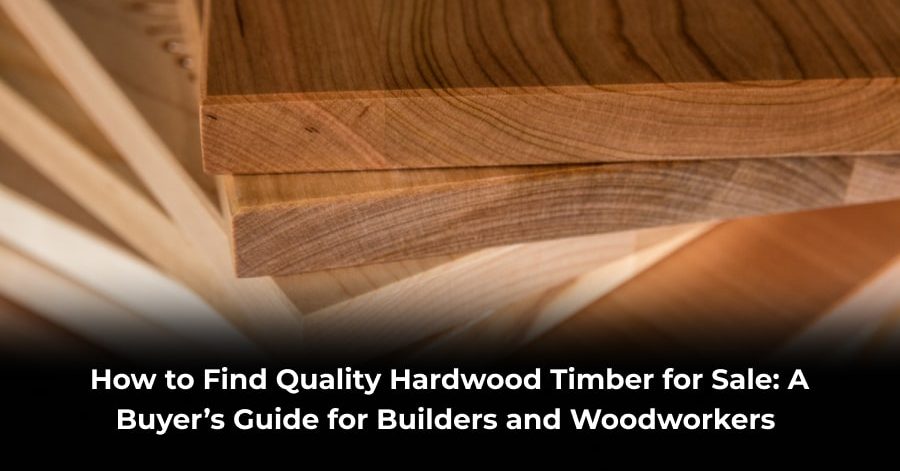Introduction
The backbone of any successful construction or woodworking project is quality material—especially when it comes to timber. Whether you’re crafting fine furniture, laying floors, or framing a structure, sourcing premium hardwood is essential. With rising global demand, navigating the market for hardwood timber for sale can be overwhelming. That’s why understanding what to look for and how to select the right hardwood timber suppliers is critical.
This blog offers an in-depth guide on sourcing hardwood, what makes it “quality,” and how to identify trustworthy suppliers that deliver value and consistency.
What is Hardwood Timber?
Hardwood timber comes from deciduous trees—those that shed leaves annually—such as oak, maple, walnut, mahogany, and teak. Known for their density, strength, and beautiful grain patterns, hardwoods are preferred for both structural applications and aesthetic projects.
Common Applications:
- Flooring and staircases
- Furniture and cabinetry
- Decking and outdoor construction
- Joinery, moulding, and trim
- Boat building and luxury interiors
Because hardwood is more durable and visually appealing than softwood, it’s often considered a long-term investment for builders and artisans alike.
Why Hardwood Timber Quality Varies
Not all hardwoods are created equal. Factors that influence quality include:
- Species and origin
- Moisture content
- Grading standards
- Processing and storage conditions
When searching for hardwood timber for sale, it’s essential to assess not just the type of wood but how it has been harvested, dried, and transported. Poorly processed timber may warp, split, or be difficult to work with.
Grading Systems and What They Mean
Understanding grading systems helps buyers differentiate between high-end and utility-grade hardwoods. Most countries follow a similar approach to classifying hardwood based on appearance, knots, splits, and overall usability.
Key Grades Include:
- Select Grade: Nearly flawless, minimal knots, ideal for fine furniture or visible installations.
- #1 Common: A few knots and variations, suitable for cabinets and joinery.
- #2 Common: More visible defects, perfect for rustic finishes or structural use.
Always ask hardwood timber suppliers to specify the grade of timber you’re purchasing. Reputable suppliers provide clear grading labels and explain how the wood will perform for your intended application.
Hardwood vs. Softwood: A Quick Comparison
| Feature | Hardwood | Softwood |
| Tree Type | Deciduous | Coniferous |
| Density | High | Low to medium |
| Durability | Excellent | Moderate |
| Common Uses | Furniture, flooring, decks | Framing, paneling |
| Cost | Higher | Lower |
While softwoods like pine are cheaper and easier to work with, hardwood offers unmatched strength, finish, and longevity—justifying the premium for most high-value projects.
How to Inspect Hardwood Timber Before You Buy
When looking at hardwood timber for sale, inspect these critical attributes:
1. Moisture Content
Kiln-dried timber should have a moisture content of 6–8% for indoor use. Higher moisture can lead to warping and cracking.
2. Grain Pattern
Look for consistent, straight grain patterns—this usually indicates higher quality and better workability.
3. Knots and Blemishes
While small knots may be acceptable, large or loose knots can affect structural integrity and aesthetics.
4. Color Uniformity
Discoloration may indicate poor storage or exposure to elements. Choose timber with even tone for visible applications.
Where to Find Hardwood Timber for Sale
There are several sources for sourcing hardwood timber for sale, depending on your location, budget, and volume requirements:
1. Local Lumber Yards
Offer the advantage of physically inspecting the wood. Ask for recommendations from local tradespeople or contractors.
2. Online Timber Retailers
Many reputable hardwood timber suppliers now operate online stores. Always verify return policies, certifications, and request samples when possible.
3. Timber Wholesalers
Best for bulk orders. These suppliers often offer competitive pricing for contractors, furniture makers, or construction firms.
4. Exporters from Timber-Producing Countries
Sourcing directly from producers (e.g., in Africa, South America, or Southeast Asia) offers cost advantages, especially for exotic hardwoods like Okoume, Mahogany, or Teak.
Questions to Ask Hardwood Timber Suppliers
To ensure a successful transaction, always ask your hardwood timber suppliers the following:
- What species and grades are available?
- Is the timber kiln-dried and what is its moisture content?
- Do you offer bulk discounts or delivery services?
- Are your products sustainably sourced (e.g., FSC certified)?
- Can you provide product samples or past client references?
A reputable supplier will answer these questions transparently and may even guide you toward the best product for your needs.
Sustainability and Certifications Matter
With increasing focus on ethical sourcing, buyers must prioritize sustainability. Many suppliers now offer hardwood that is:
- FSC-certified (Forest Stewardship Council)
- PEFC-certified (Programme for the Endorsement of Forest Certification)
When choosing from hardwood timber suppliers, prioritize those who comply with international forestry standards. Not only does this support the environment, but it also ensures consistent supply chains and product traceability.
Pricing Guide for Hardwood Timber
Prices for hardwood vary significantly depending on species, grade, location, and order volume.
| Species | Average Price (USD per m³) | Application Type |
| Oak | $700–$1,200 | Flooring, furniture |
| Walnut | $1,000–$2,500 | Luxury cabinetry, décor |
| Teak | $1,500–$3,000 | Outdoor furniture, boats |
| Okoume | $500–$900 | Plywood, marine applications |
Always request quotes from multiple hardwood timber suppliers and compare based on quality, certification, and delivery terms—not just price.
Conclusion
Whether you’re constructing a hardwood deck, designing custom cabinets, or framing architectural features, sourcing the right hardwood timber for sale is crucial. From understanding wood grades to verifying certifications and sustainability, a well-informed buyer is less likely to face delays, defects, or budget overruns.
Partner with experienced hardwood timber suppliers who offer transparency, consistent product quality, and customer support. With the right supplier, every cut of wood contributes to a stronger, more beautiful final result.






